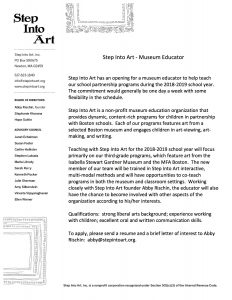From Medieval Europe to modern day Hollywood, women have long suffered sexualized power imbalances for the sake of “art.” With the recent changing climate, due to the #MeToo movement, museum educators increasingly face the need to address problematic artists and their subjects hanging in our museums. Yet, how can we acknowledge and encourage conversation around controversial artwork without censoring or erasing historically and culturally significant work?
These conflicting viewpoint have come to a head around the painting “Thérèse Dreaming” by 20th century French artist Balthus. The sexualized nature of the painting depicting Balthus’ twelve year old neighbor Thérèse Blanchard drove New York entrepreneur Mia Merril to launch a petition calling for the removal of the painting from the Metropolitan Museum of Art’s walls. The petition, which amassed over 11,000 signatures, was later updated to include a compromise of asking the institution to include a label acknowledging the problematic nature of the artist and painting. The Met has refused to remove the painting nor update the label copy stating that “art is meant to reflect many time periods, not just the current one.” The National Coalition Against Censorship (NCAC) have released their own statement supporting the Met’s choice and alluding to other recent controversies in the art world.
“Recent cases of censorship, including the threats of violence that forced the Guggenheim Museum in New York to remove several exhibits, reveal a disturbing trend of attempts to stifle art that engages difficult subjects .Art can often offer insights into difficult realities and, as such, merits vigorous defense. NCAC applauds The Met’s refusal to bow to its critics. We will continue to support cultural institutions that allow members of the public to make up their own minds about what is ‘offensive.'” –NCAC Press Release
The Met and NCAC responses hinge at the root of this conflict. In recent years the art world has been rocked by controversies such as Terry Richardson, Nicolas Nixon, and other reports of the rampant sexual harassment. As a result many institutions are no longer supporting contemporary artists with problematic histories. Yet, many of the artists we applaud, such as Picasso, Balthus, and Diego Rivera, If alive today, would be considered highly problematic in our current climate. Artwork has long placed women at an imbalance of power, an object of beauty meant to serve its male creator. Through the display of this glorified power imbalance, are museum supporting upholding the sexualization and exploitation of women? If so, what is our role is dispelling this toxic culture? As museum educators, how can we teach important works of art without erasing the damages done to women through the adoration of this artwork?
In the face of these issues, many museum educators are advocating for changing “context, not content.” While art has historically been contextualized within its own time period, cultural, social, and political contexts, it is increasingly important to analyze the works meaning within our current cultural climate. Instead of ignoring the controversial aspects of a piece of art we must embrace that controversy and expand upon what story the artwork can tell. Through this we can spark dialogue and incite difficult conversations that need to be had within the art world.

